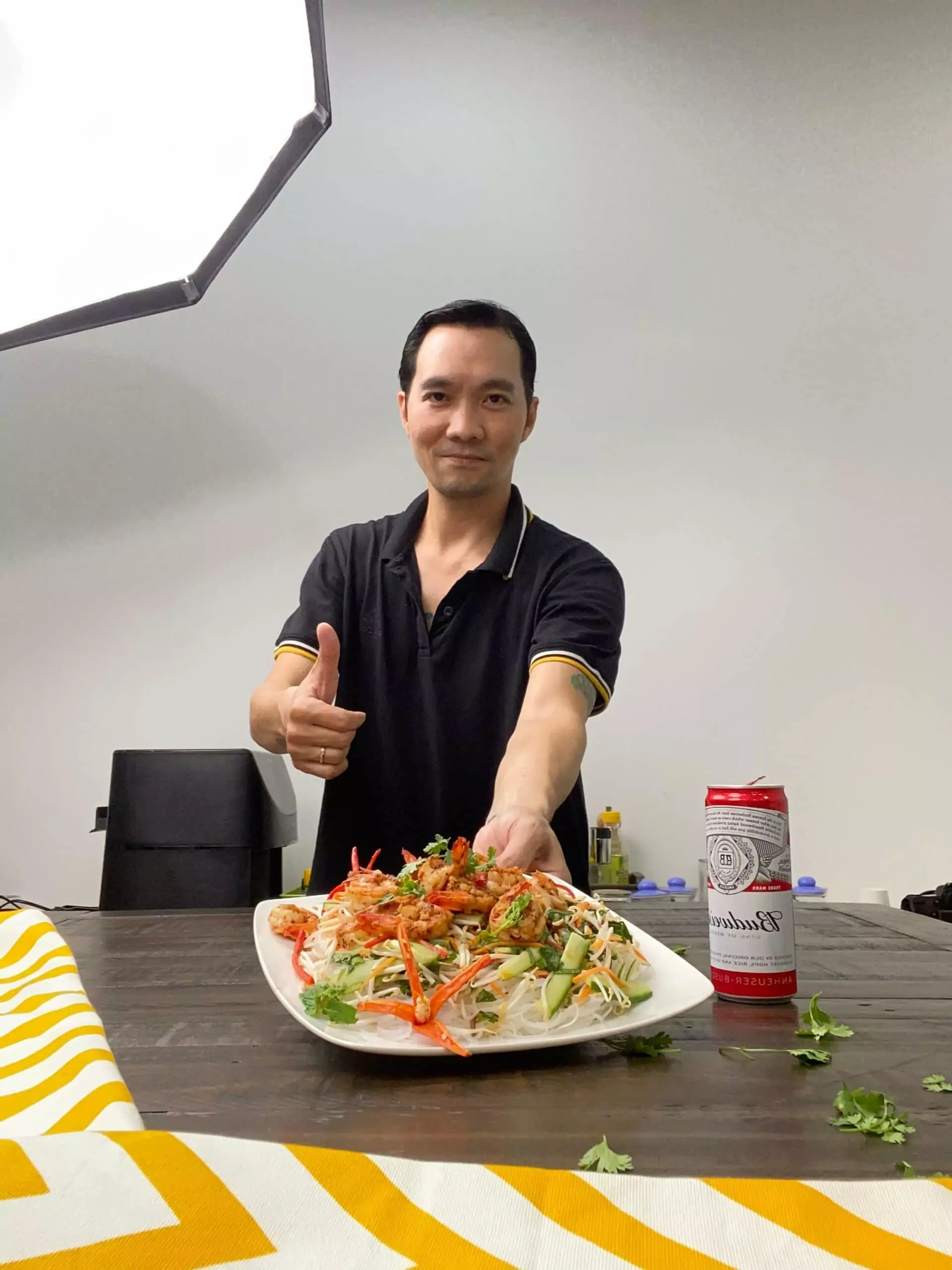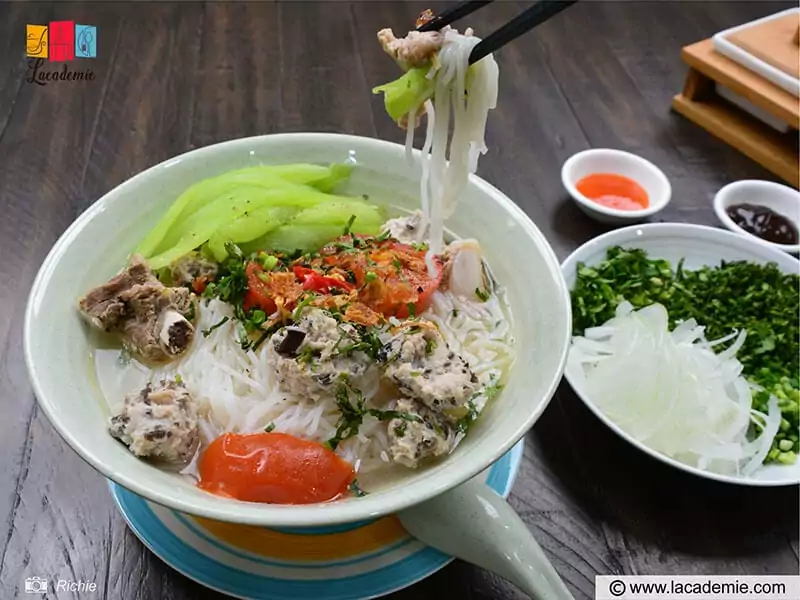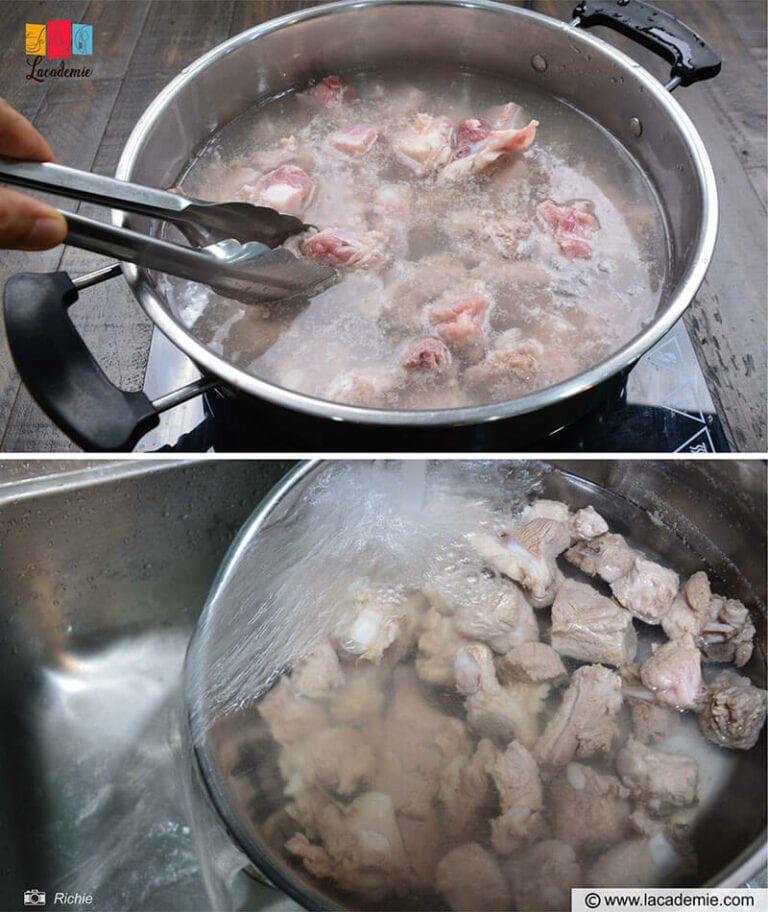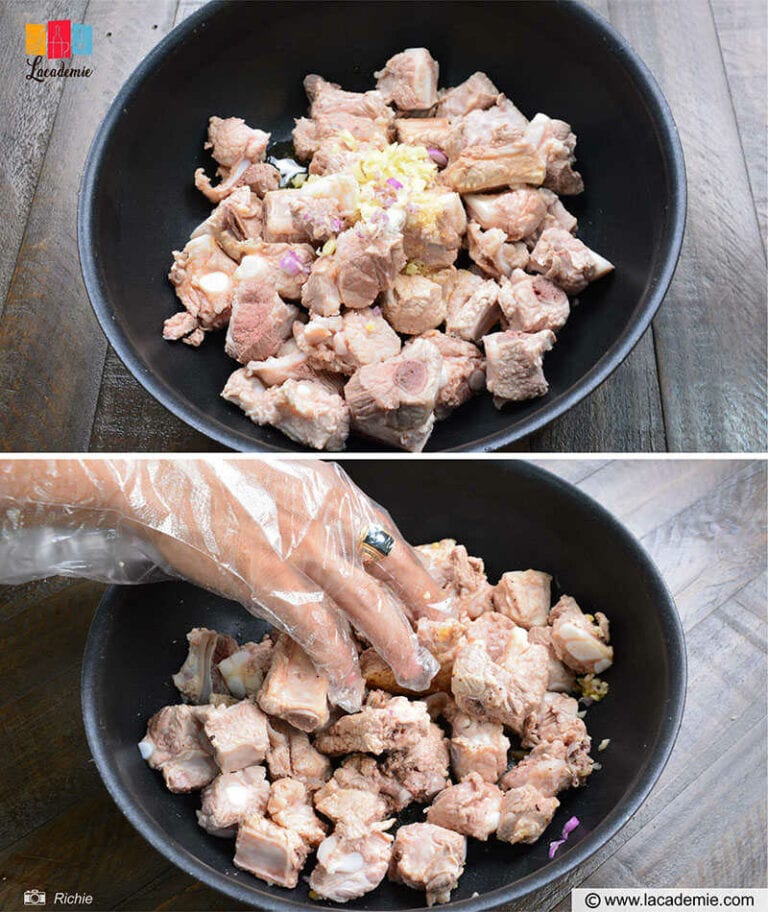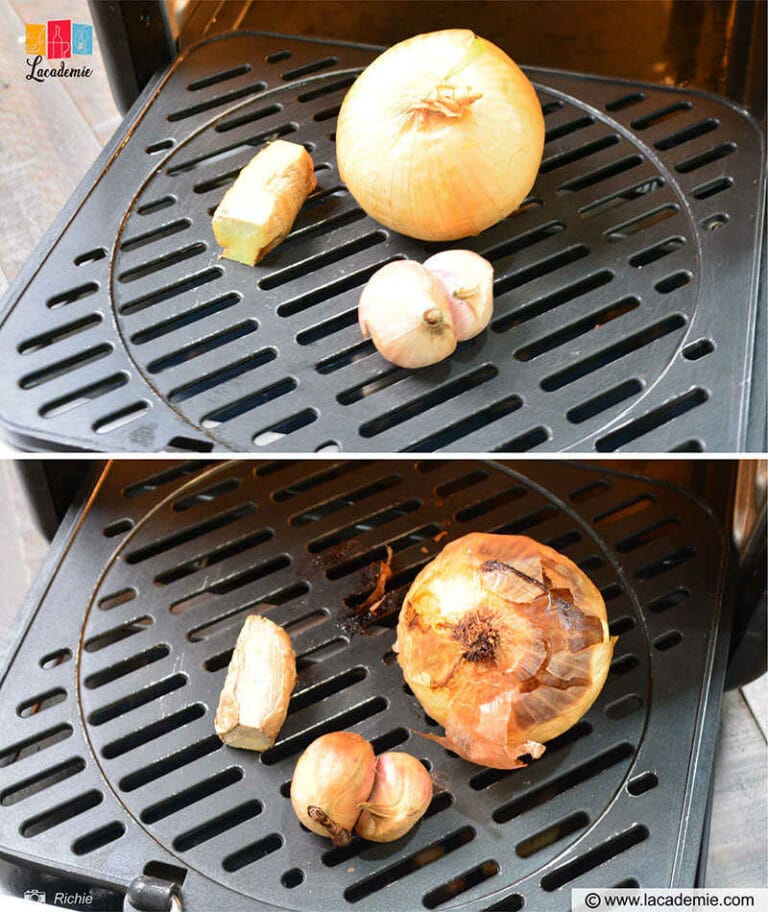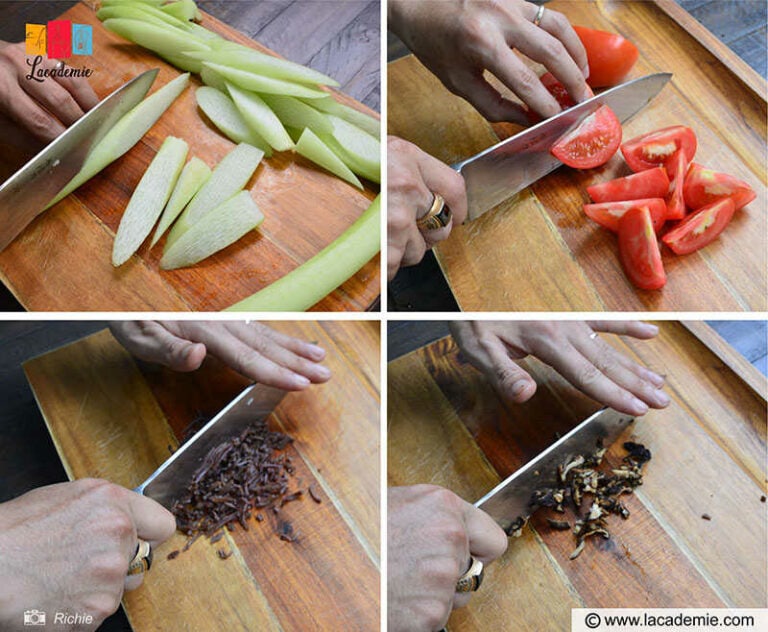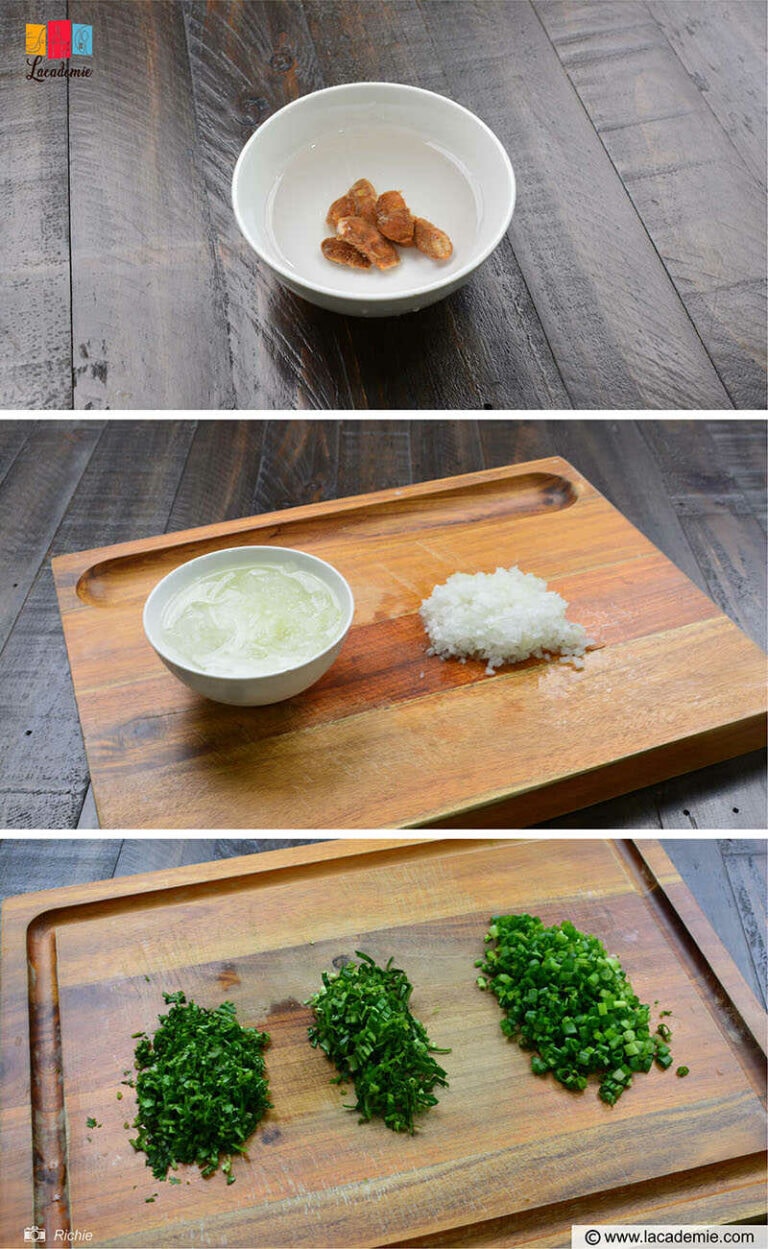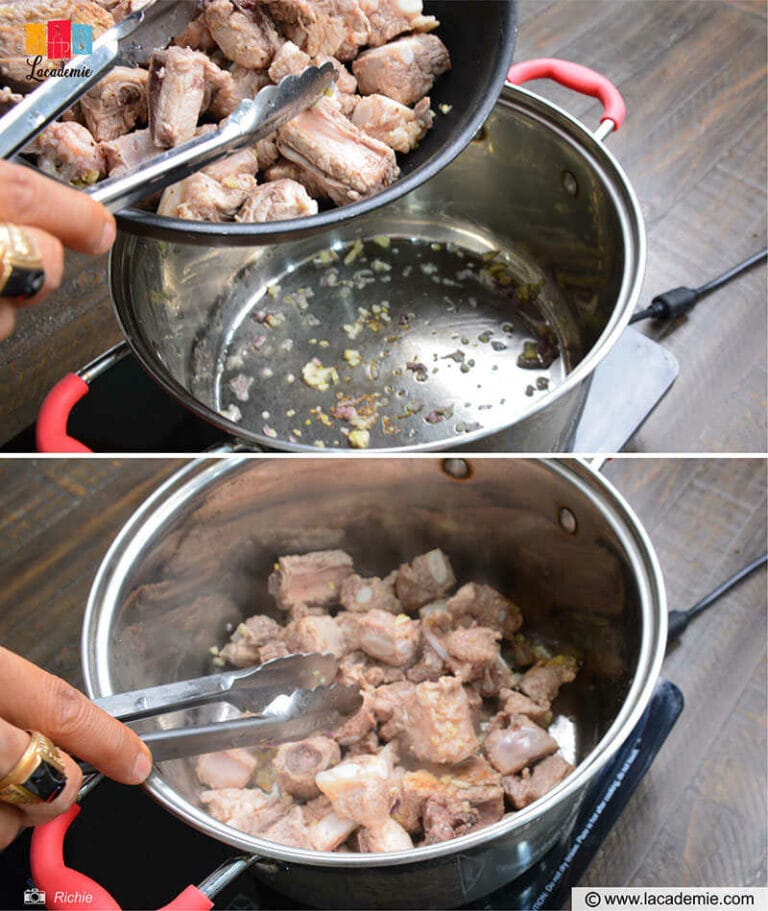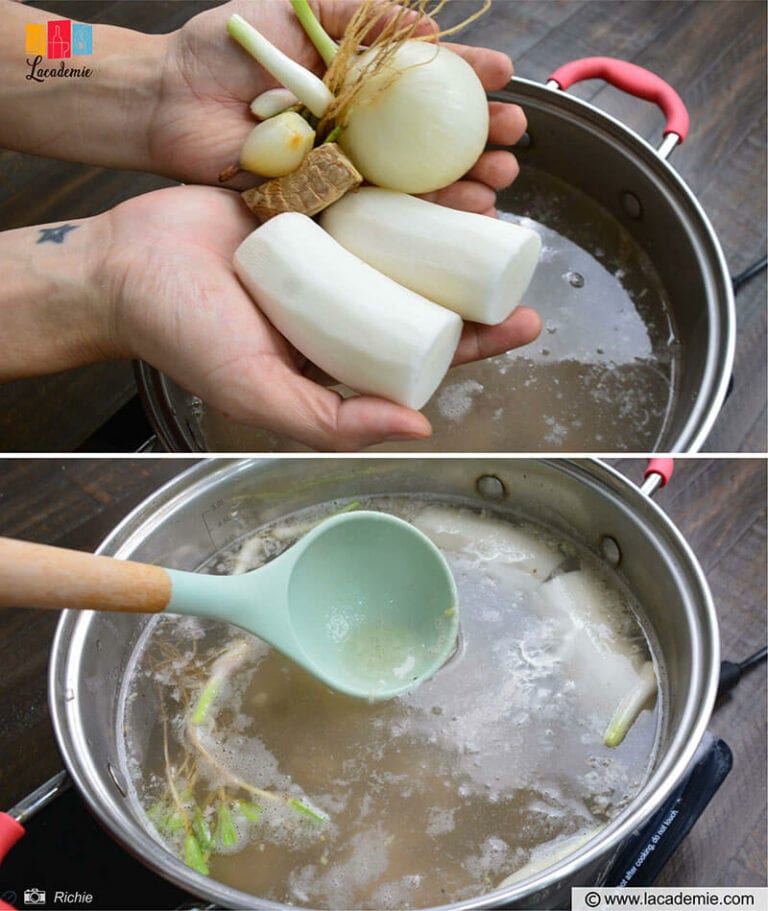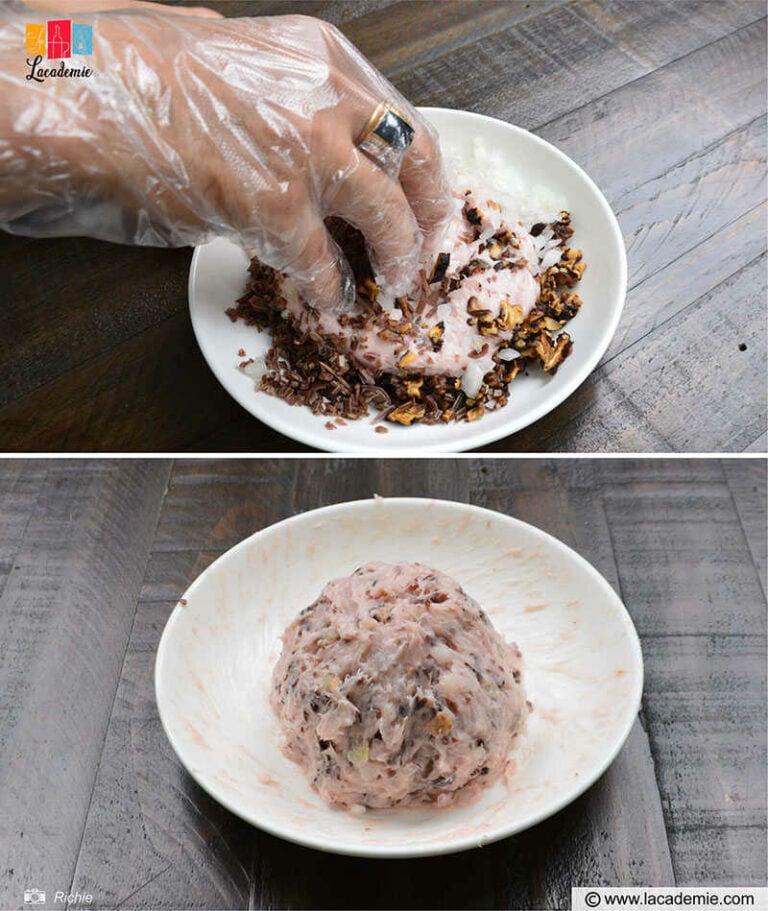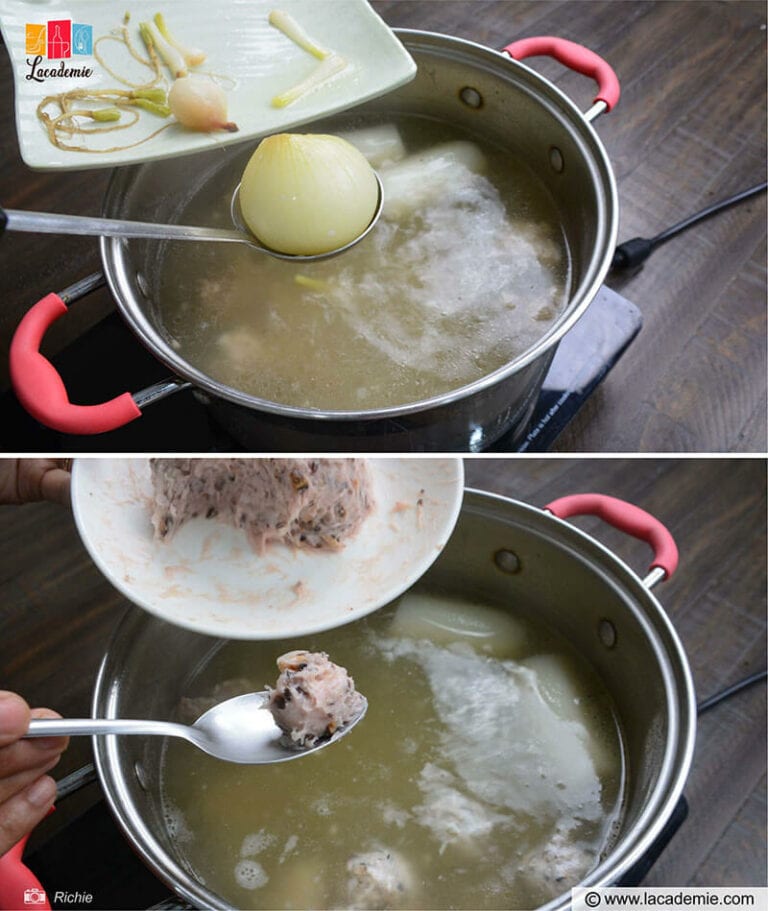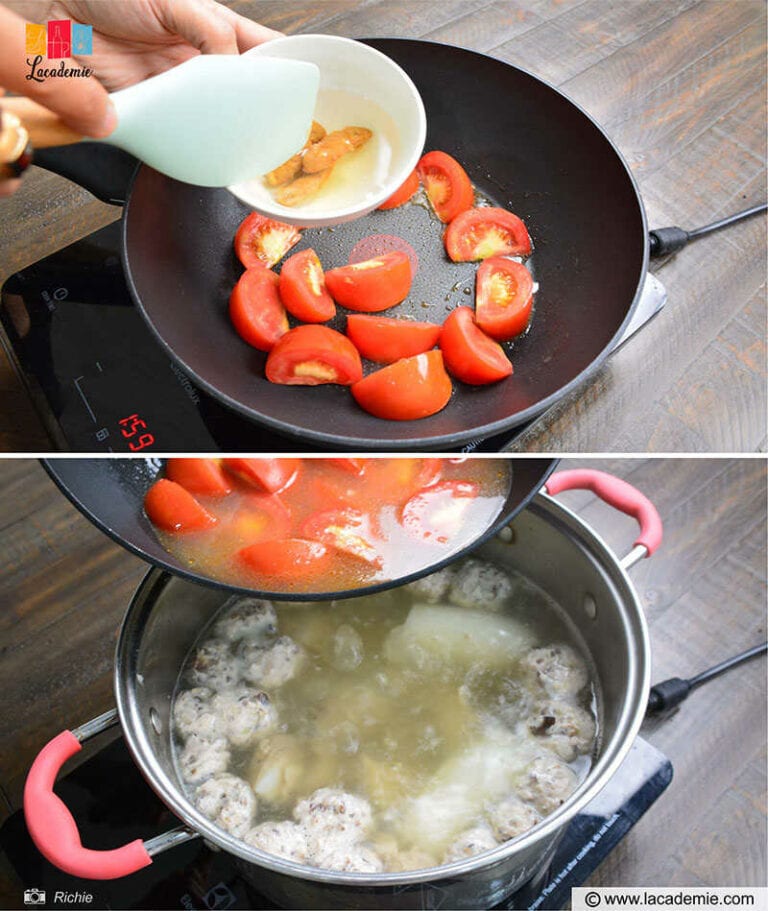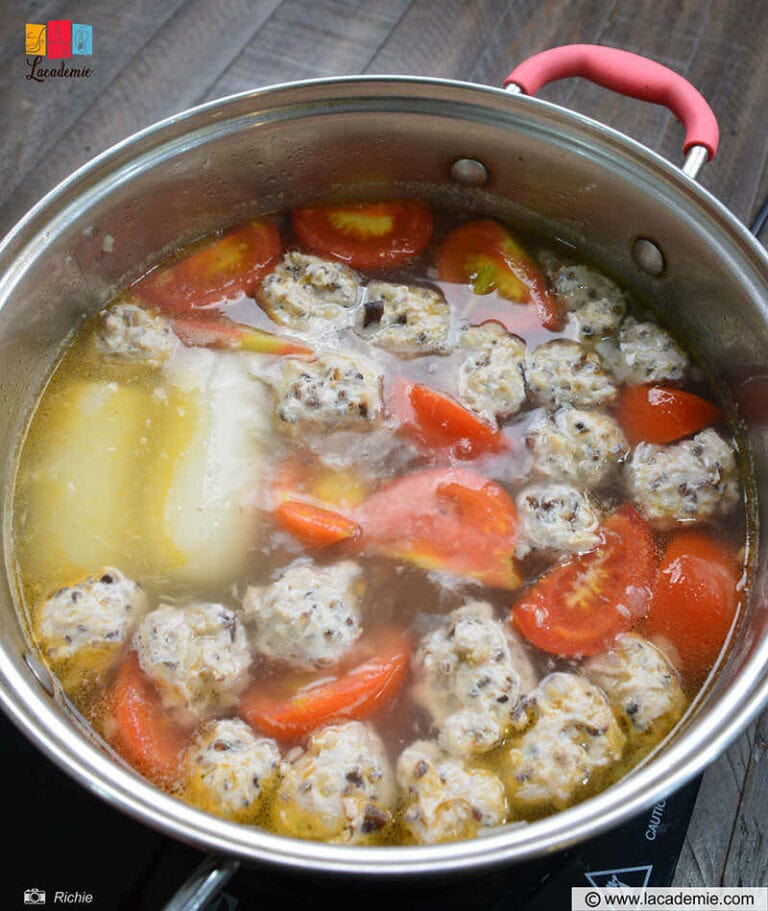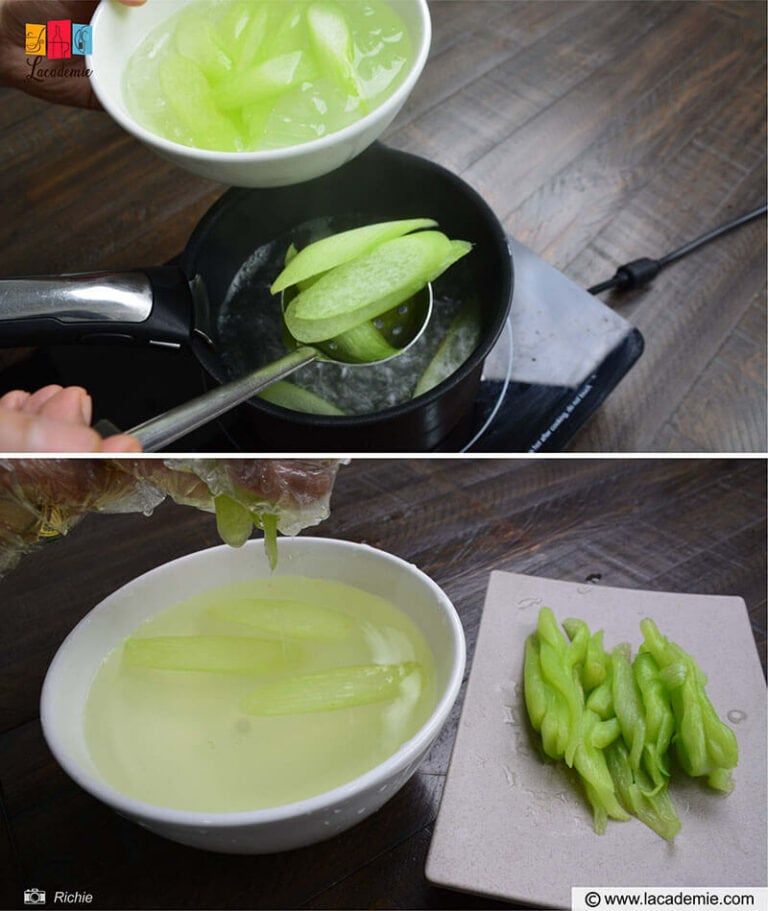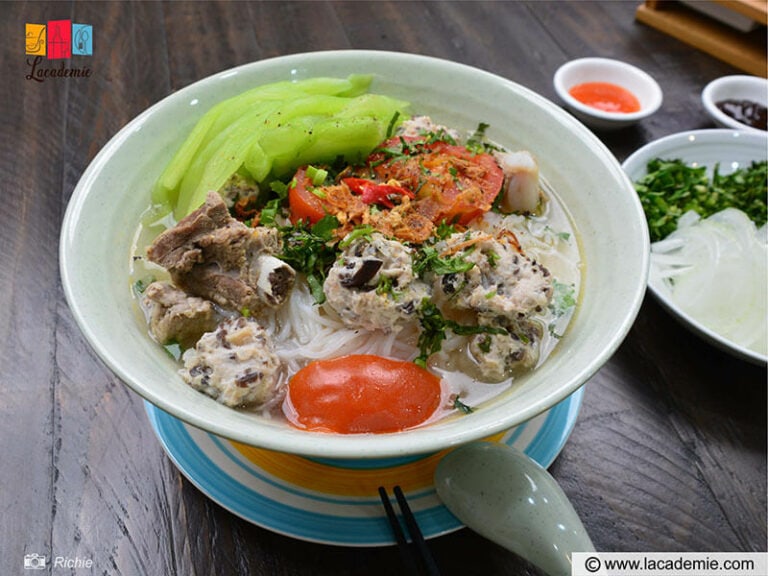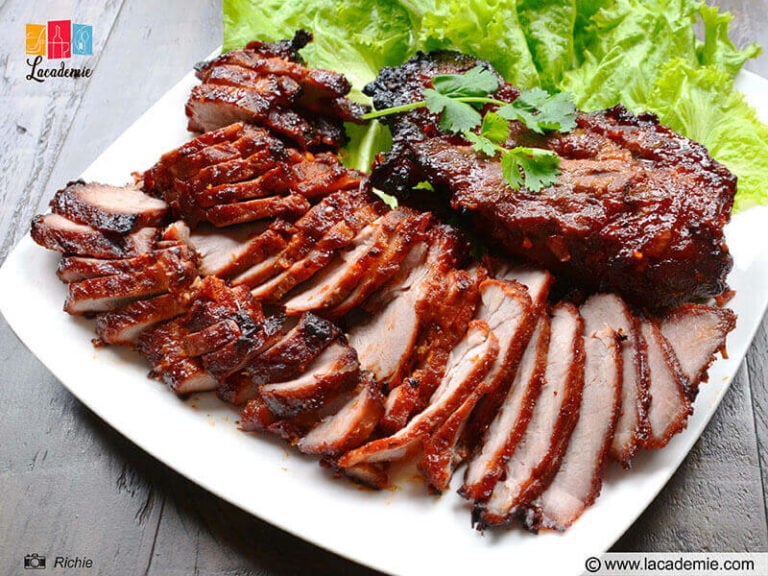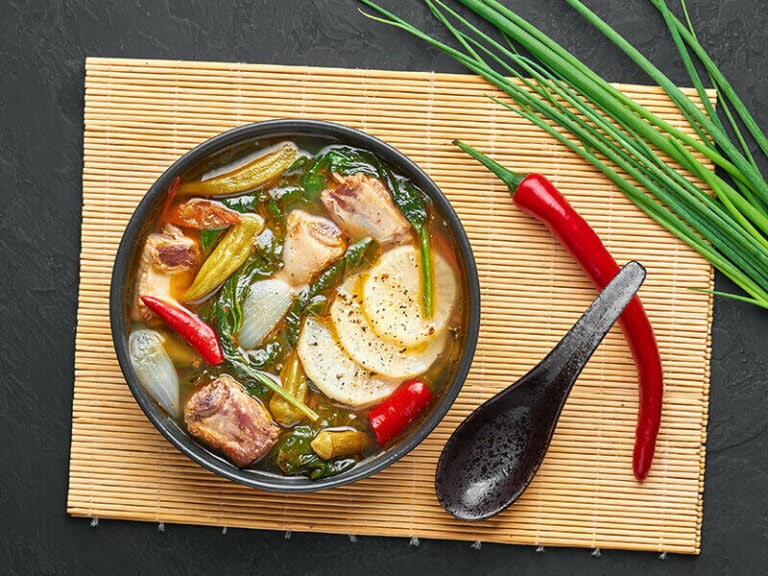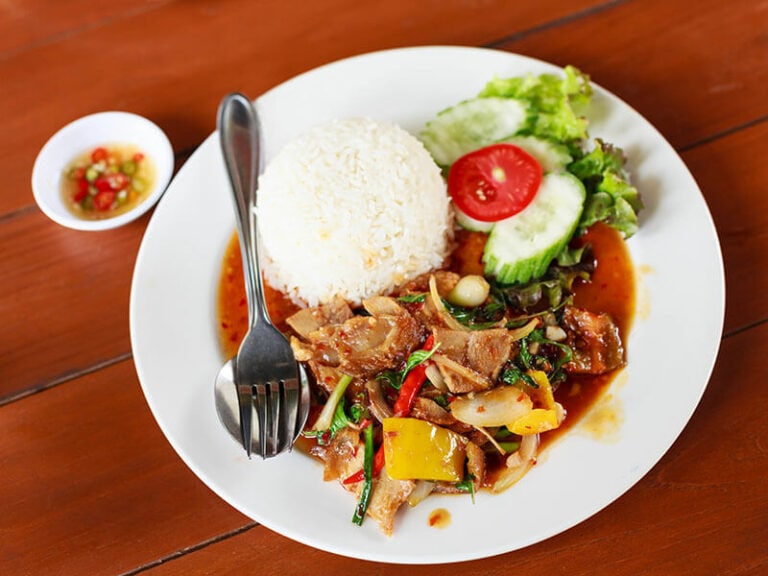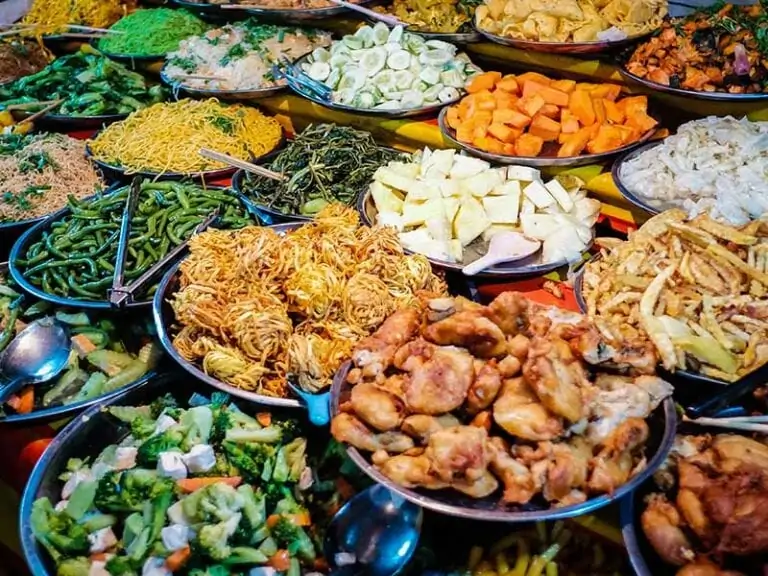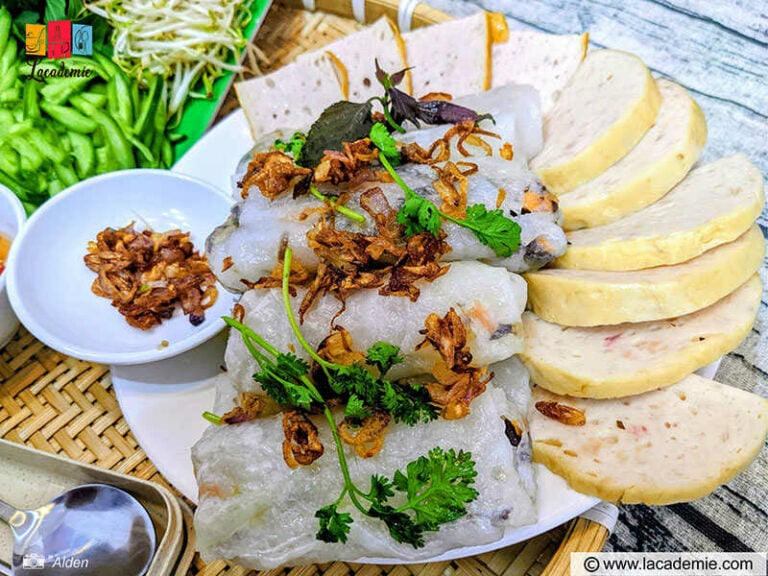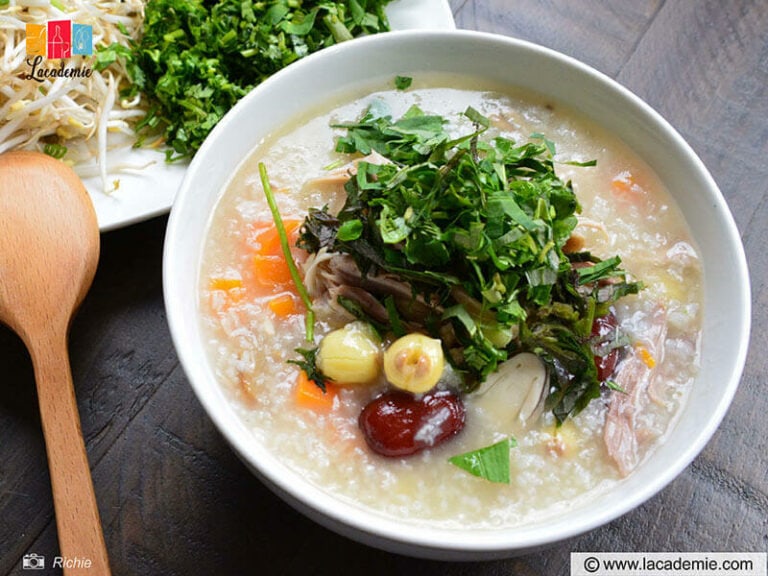Nothing soothes the soul like a bowl of Vietnamese Pork Ribs and Elephant Ear Stalk Noodle Soup, known as Bún Sườn Dọc Mùng. This dish is a delicate blend of succulent pork ribs and uniquely textured elephant ear stalks, all mingling in a soothing broth and soft noodles.
It is a treasure trove of flavor, texture, and aroma, truly epitomizing the richness of Vietnamese cuisine. I invite you to check out today’s recipe and learn how to make this exquisite Vietnamese delicacy!
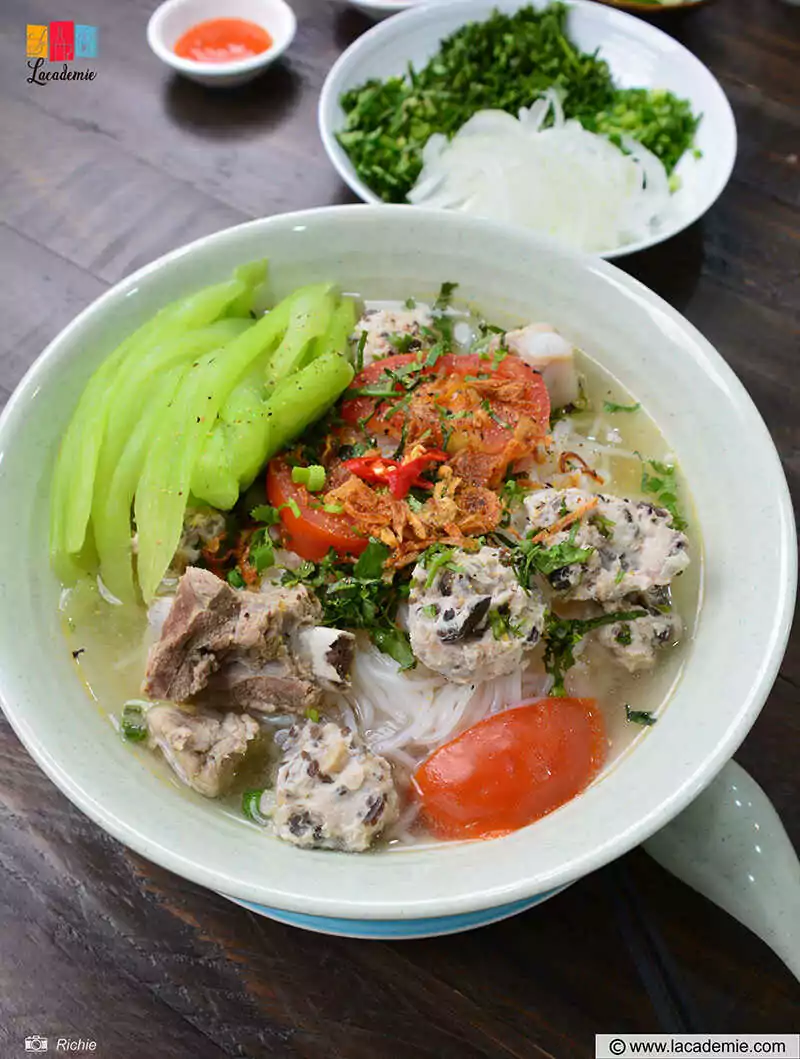
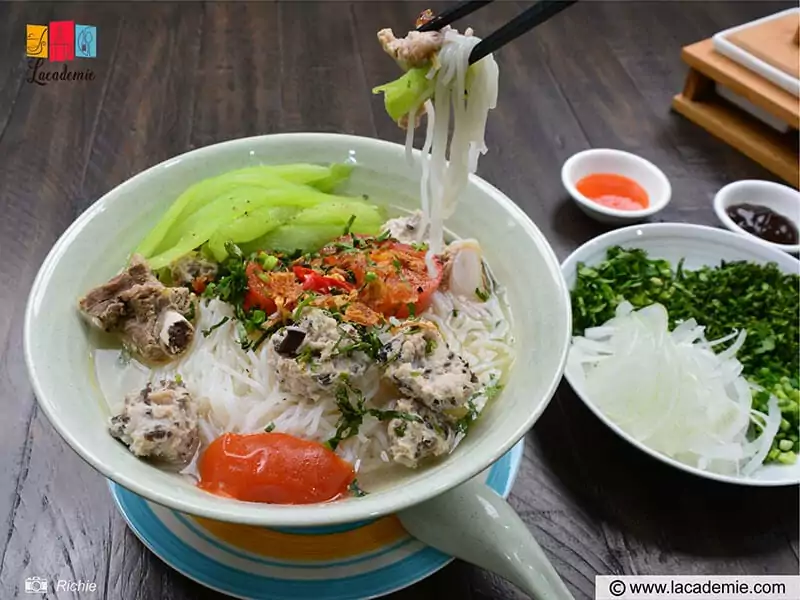
What Is Bun Suon Doc Mung
Known as a comfort food, Bun Suon Doc Mung is enjoyed all year round in Hanoi. The dish is most commonly eaten during the daytime, particularly for breakfast or lunch, at humble street-side stalls. People also cook it at home for dinner when families gather after a busy day.
Doc Mung or elephant ear stalks are derived from the taro plant. This plant is cherished for its large, broad leaves that, as you may guess, look a lot like an elephant’s ear, hence the name. However, in this recipe, it’s not the leaves that are used but rather the stalks.
The stalks have a distinct texture that is crunchy yet tender, with a mild, slightly sweet taste. In Bun Suon Doc Mung, these prepared stalks are added to the broth just before serving to retain their crunch.
This dish may not require intricate culinary skills, but it does demand attention to details, especially with the main components: broth, elephant ear stalks, and pork ribs. When done right, these ingredients are all perfectly balanced in a bowl of heartwarming soup.
This is a dish that takes me to the vibrant and charming streets of Hanoi, and I believe that Bun Suon Doc Mung will have the same effect on you!
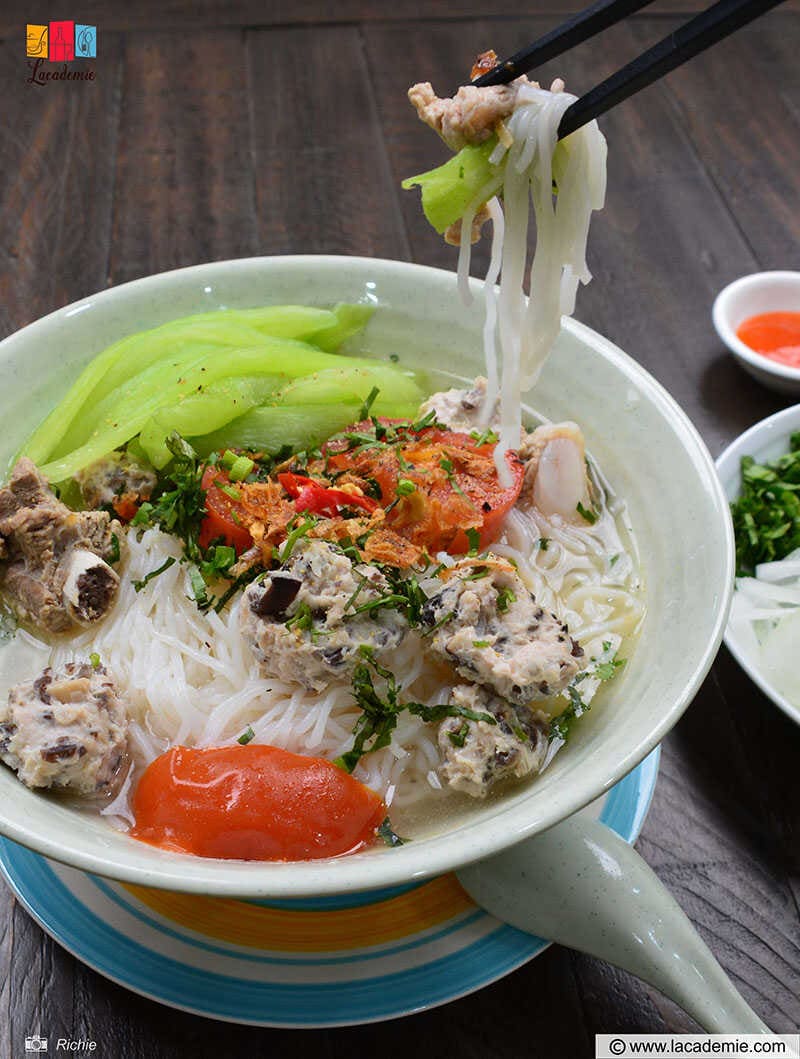
Tools
- Large pot: Used for boiling the pork ribs and elephant ear stalks and for preparing the soup base.
- Soup ladle: Used for serving the soup and ensuring that each serving has an even amount of broth, noodles, meat, and vegetables.
- Mixing bowl: Used for mixing ingredients together, such as the noodles, before they are added to the soup.
- Pan: Used for sautéing or frying some ingredients, like garlic or shallots, before adding them to the soup.
- Tongs: Used for handling hot ingredients, such as cooked pork ribs or elephant ear stalks.
- Food prep gloves: Used to protect the hands when handling hot or sharp ingredients or when needing to maintain cleanliness.
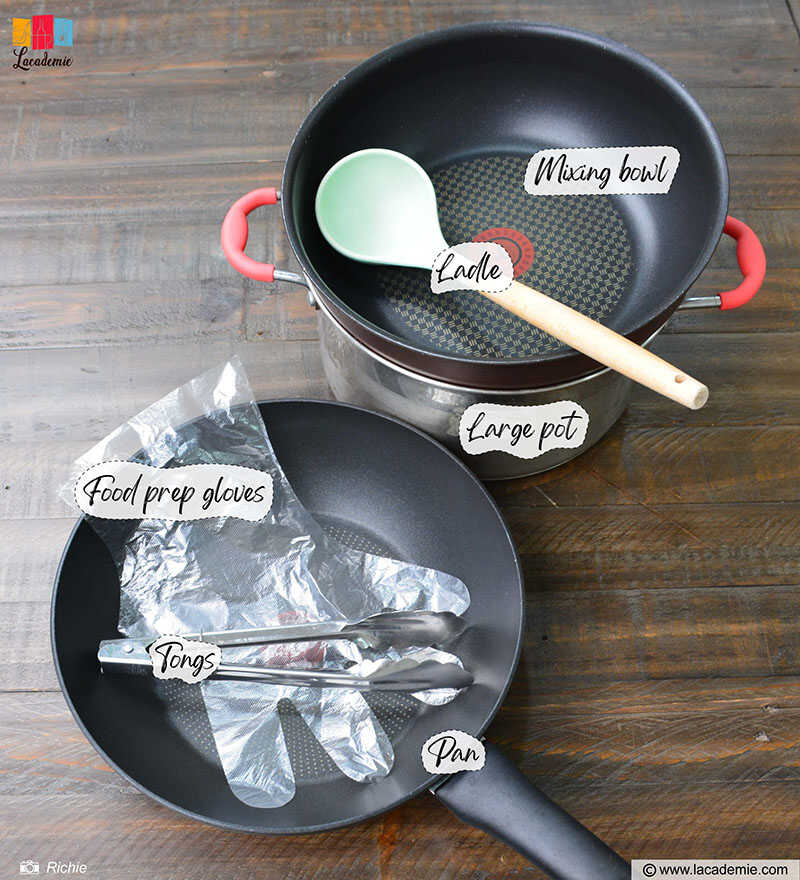
Additional optional tools may include
- Small pot: Used for cooking smaller quantities of ingredients or for preparing side dishes or accompaniments.
- Spatula: Used for flipping, stirring, or moving ingredients around in the pan or pot.
- Slotted spoon: Used for removing items from the soup or liquid while allowing the liquid to drain.
- Small spoon: Used for taste-testing the soup or for adding smaller amounts of ingredients such as spices or seasonings. You can also utilize it to form pork balls.
Ingredients
- Pork ribs: The central ingredient of the dish, providing the broth with a rich, meaty flavor.
- Roasted onion, roasted shallot, a stalk of roasted ginger, root of cilantro, and white radish: These ingredients are roasted and added to the broth, enhancing its aroma and depth of flavor.
- Vietnamese pork paste: Mixed with additional ingredients, this is used to make flavorful pork balls that are added to the soup for extra texture and taste.
- Dried shiitake mushrooms and wood ear mushrooms: These mushrooms are soaked, chopped, and mixed with the pork paste for the pork balls. They add a unique flavor and crunchy texture to the pork balls.
- Minced onion: This is mixed with the pork paste to give the pork balls an additional layer of flavor.
- Minced shallot and garlic: Half of this is used to marinate the pork ribs, adding flavor to the meat. The rest is sautéed in oil at the start of the cooking process, forming the flavor base for the broth.
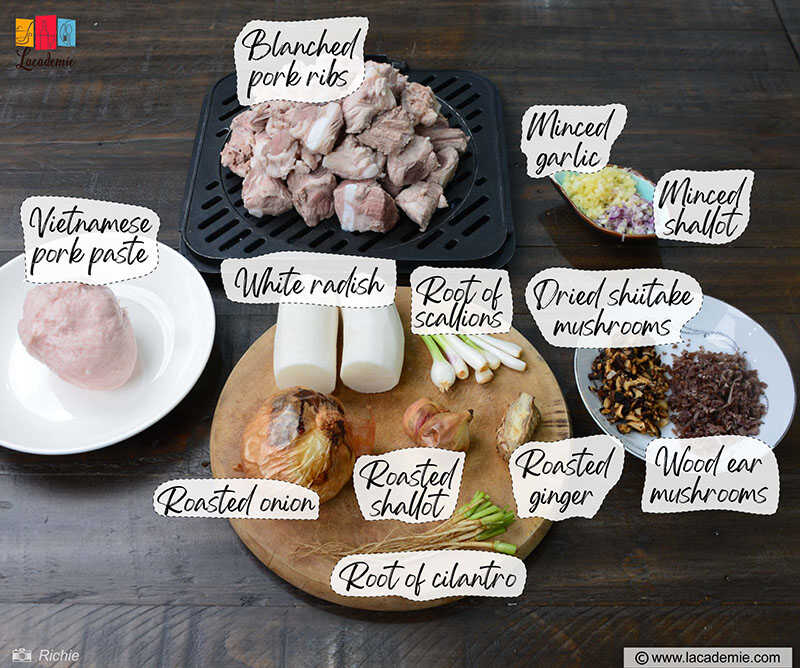
Ingredients for the Soup
- Elephant ear stalk: This is peeled, sliced, and boiled until tender. The elephant ear stalk adds a refreshing crunch and subtle sweetness to the dish.
- Tomatoes: These are briefly sautéed before being added to the soup, which gives the broth a tangy taste and attractive color.
- Tamarind: This is soaked in water and mashed, then the juice is added to the broth. It gives the soup a sour note that balances the richness of the pork.
Ingredients for Serving
- Sliced onion: This is added to the finished dish as a garnish, providing a bit of crunch and a fresh, sharp flavor that cuts through the richness of the broth.
- Fried shallots: This garnish adds a bit of crunch and a sweet and savory onion flavor.
- Finely chopped culantro, scallions, and cilantro: These herbs are sprinkled over the finished dish, contributing fresh, green notes and making it visually appealing.
Spices for Marinating the Ribs
- Ground pepper: Adds a subtle heat to the marinade.
- Soup powder: Enhances the savory taste of the ribs.
- Salt: An essential seasoning, it amplifies all the flavors in the marinade.
- Fish sauce: This adds umami and depth to the marinade.
- Brown sugar: Adds a little sweetness to balance the saltiness.
Spices for the Soup
- Salt: Essential for seasoning the broth.
- Soup powder: Adds a savory depth to the broth.
- Rock sugar: Adds a touch of sweetness, which balances the other flavors in the soup.
- Olive oil: Used for sautéing pork ribs and tomatoes, which enhances their flavors before they are added to the soup.
- Fresh vermicelli noodles: These soft, white noodles form the base of the dish, soaking up the flavorful broth. You can also opt for dried noodles and prepare them as per the instructions on the package.
- Lime wedges, or chili pepper: add to the dish to boost its flavor.
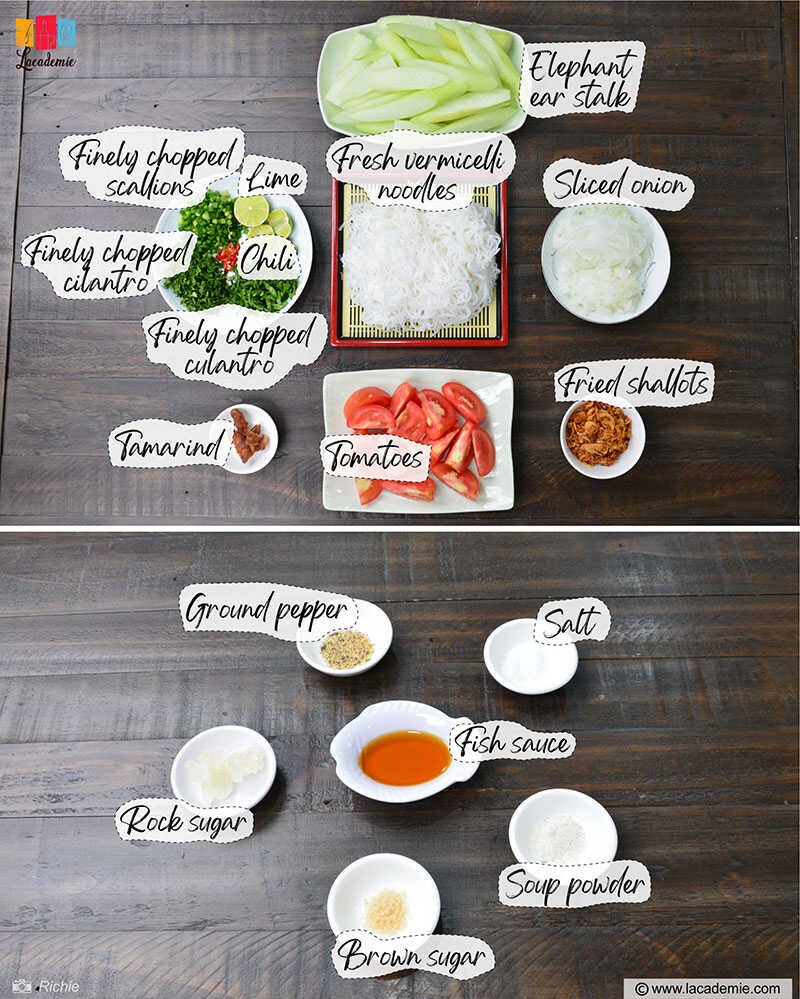
Directions
Step 1: Marinate The Pork Ribs
First, quickly blanch the pork ribs with some salt for a minute or two. After that, rinse the ribs thoroughly to reduce unwanted residues and lessen the strong aroma.
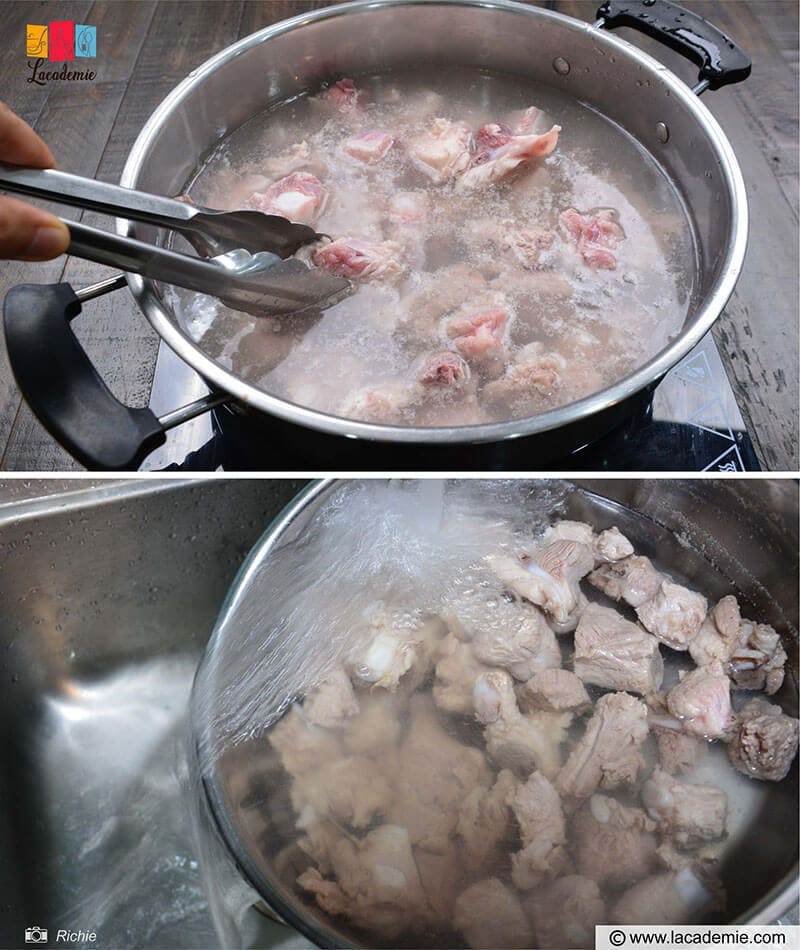
Next, mix the pork ribs with pepper, soup powder, salt, fish sauce, brown sugar, and half of the minced shallots and garlic. Leave this mixture to marinate for 30 minutes, letting the flavors permeate the ribs.
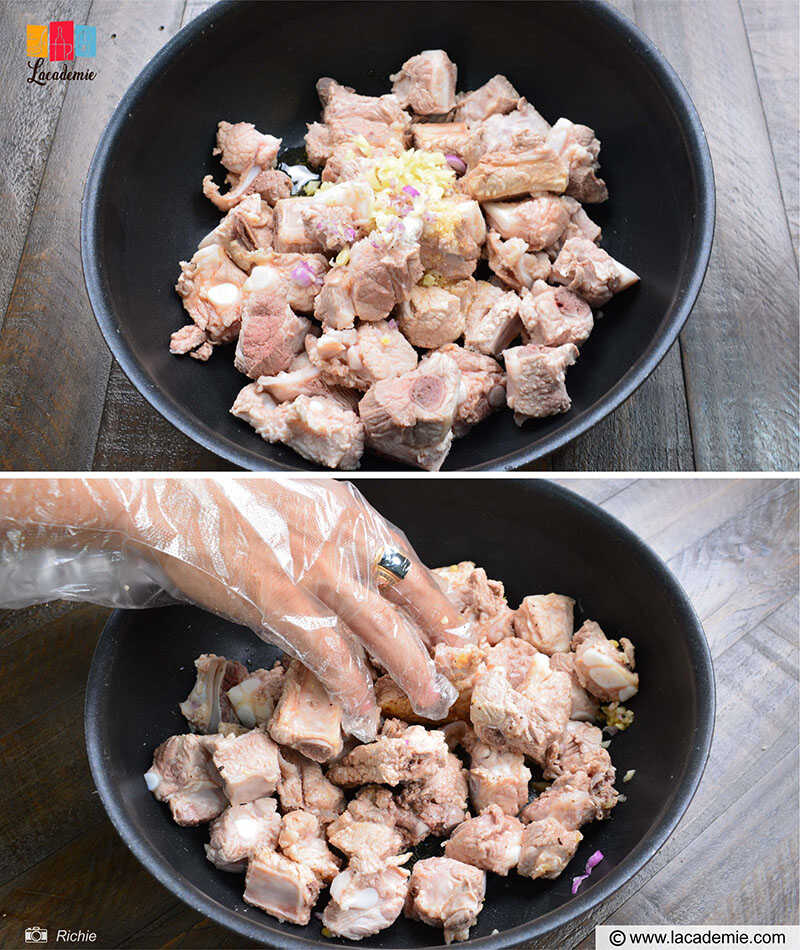
Step 2: Prepare The Vegetables And Herbs
While the ribs marinate, roast a whole onion, shallot, and a piece of ginger in the oven at 400 degrees F for about 15 minutes. Then, peel off the charred outer layers to ensure a clear broth later.
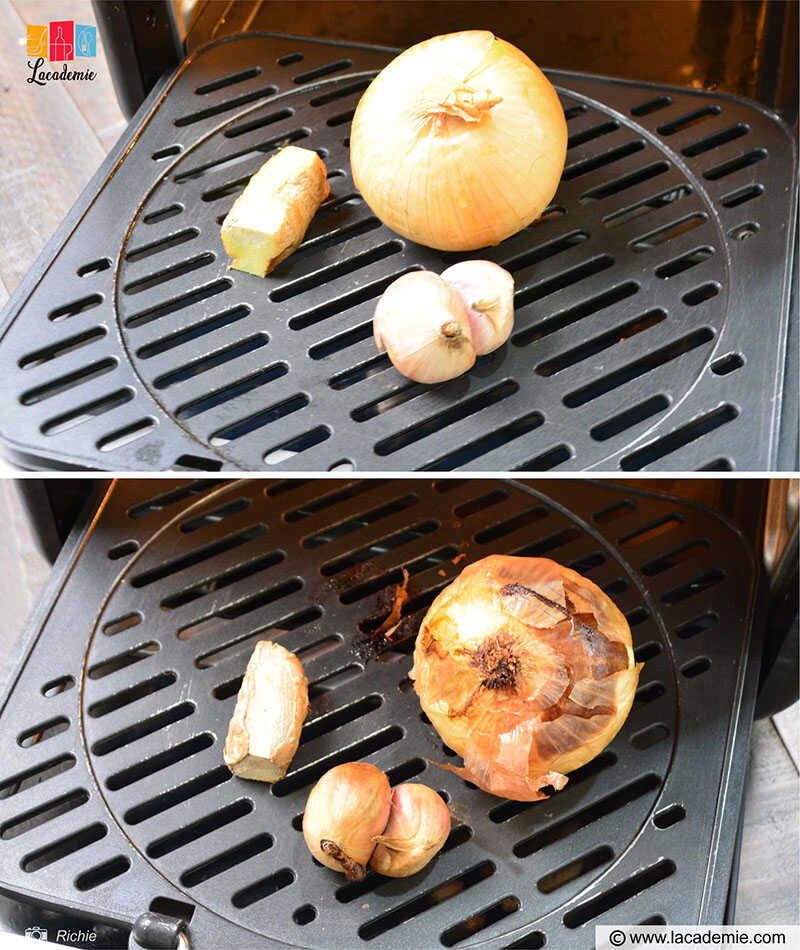
Next, peel the elephant ear stalk and cut it into thin slices. Slice the tomatoes into wedges as well.
Soak the mushrooms in warm water for about 20 minutes to soften them, then chop them finely.
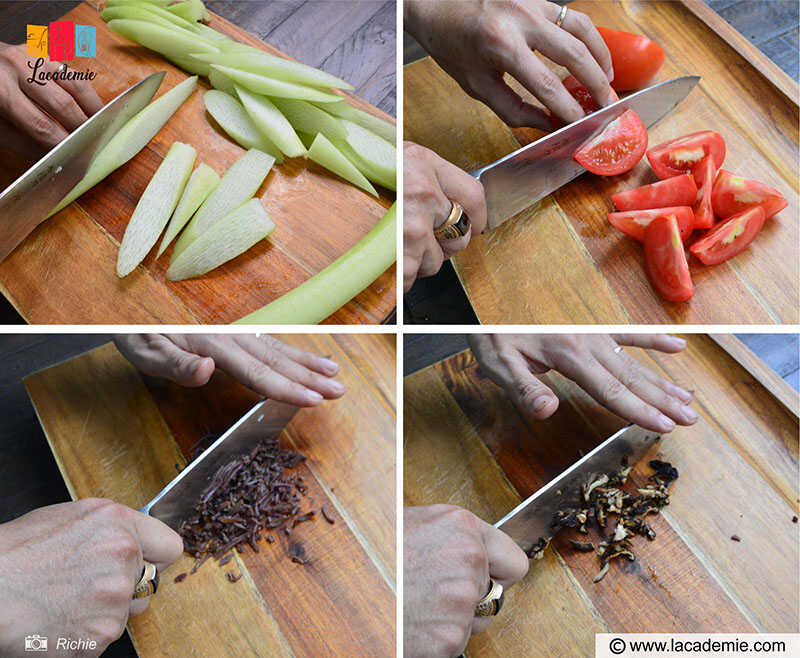
Chop up culantro, cilantro, and scallions, saving the roots of the scallions and cilantro for the soup later. Mince half an onion, with the other half sliced thinly for serving later.
Rinse the sour tamarind well and soak it in water to soften.
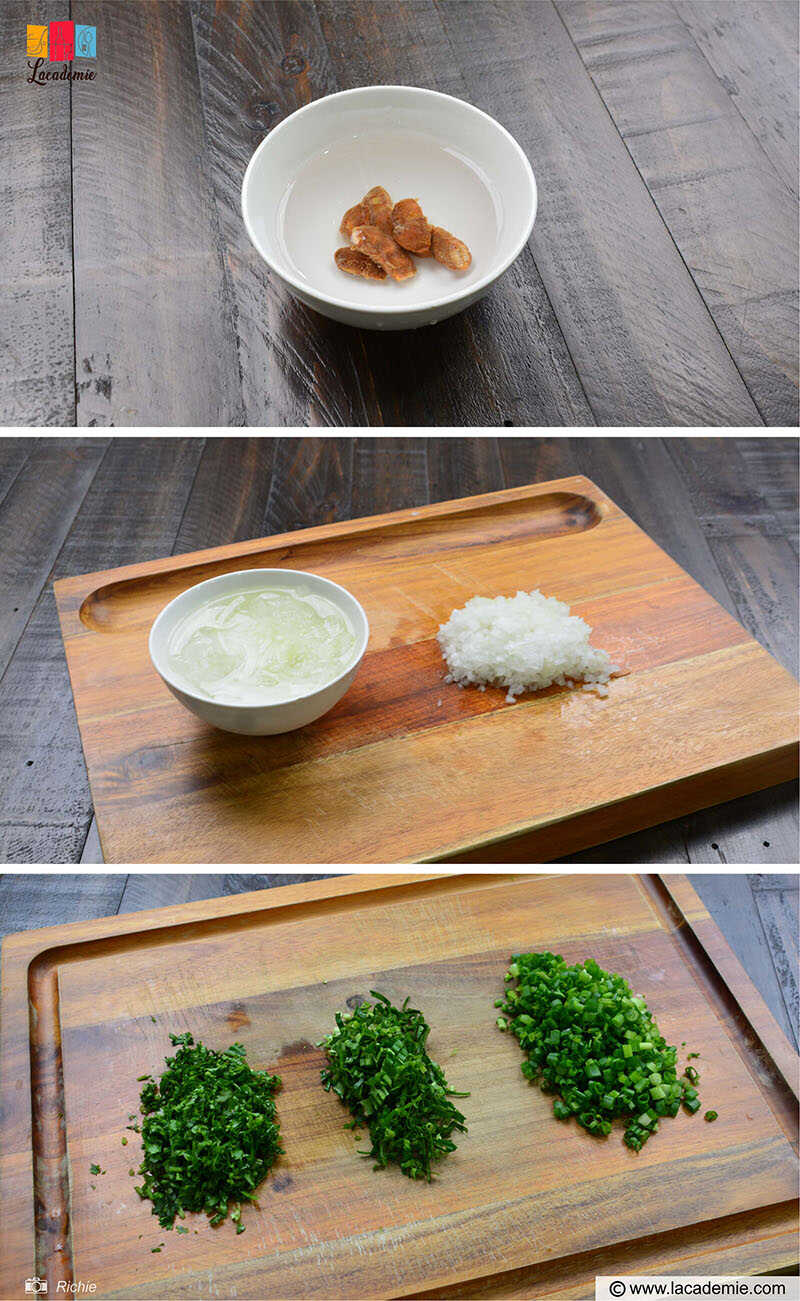
Step 3: Cook The Pork Ribs
Add some olive oil to a pot and sauté the remaining minced shallots and garlic until they’re fragrant. Add the marinated pork ribs to the pot and stir-fry them for 2 to 3 minutes to sear them.
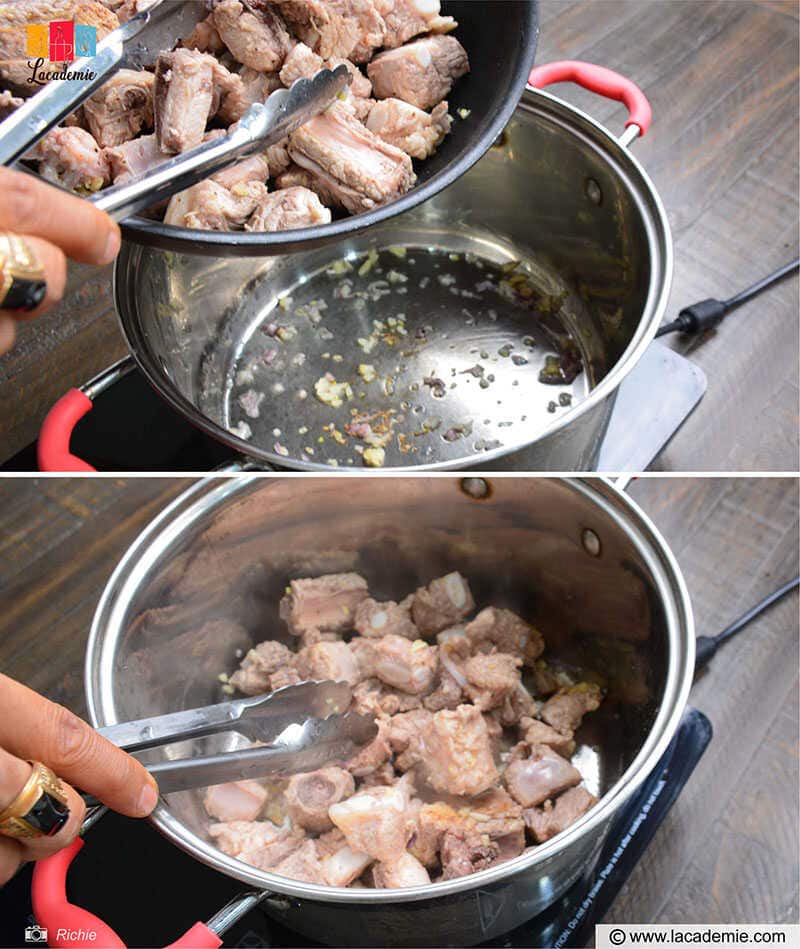
Pour 3.5 quarts of water into the pot and add in the roasted vegetables, radish, and the saved herb roots. Bring the mixture to a boil and then simmer for an hour over medium-low heat until the pork ribs become tender.
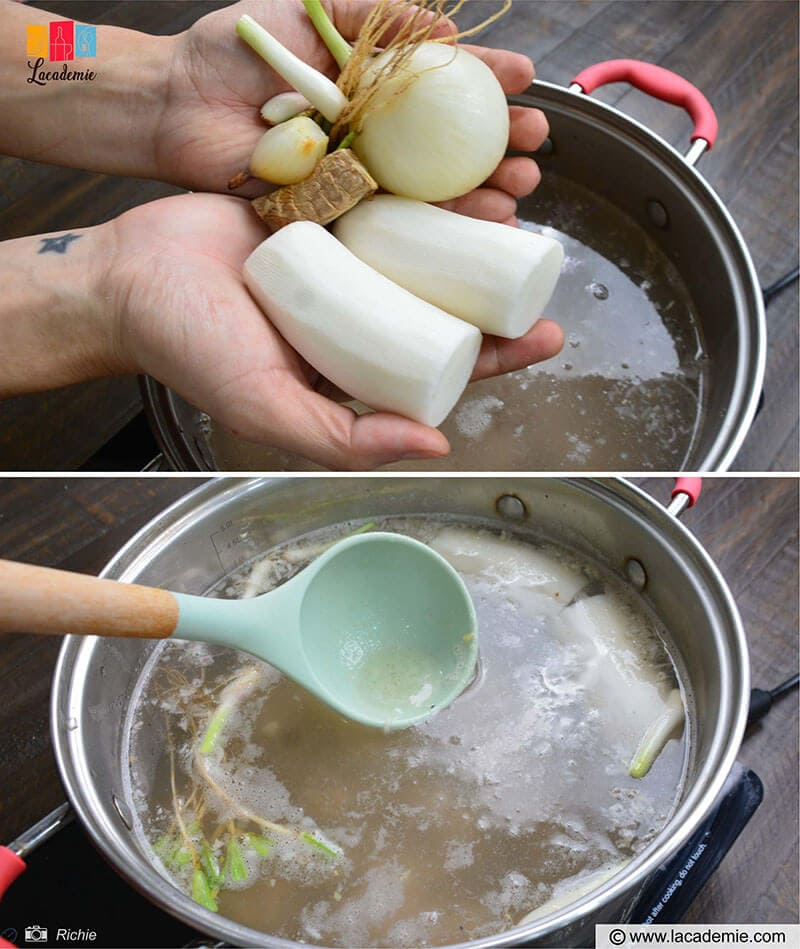
Step 4: Prepare The Meatballs
While the ribs are simmering, combine the ground pork with wood ear mushrooms, shiitake mushrooms, and the minced onion. For a uniform mix, it’s best to use food prep gloves. Don’t worry about adding extra spices — the ground pork is already seasoned!
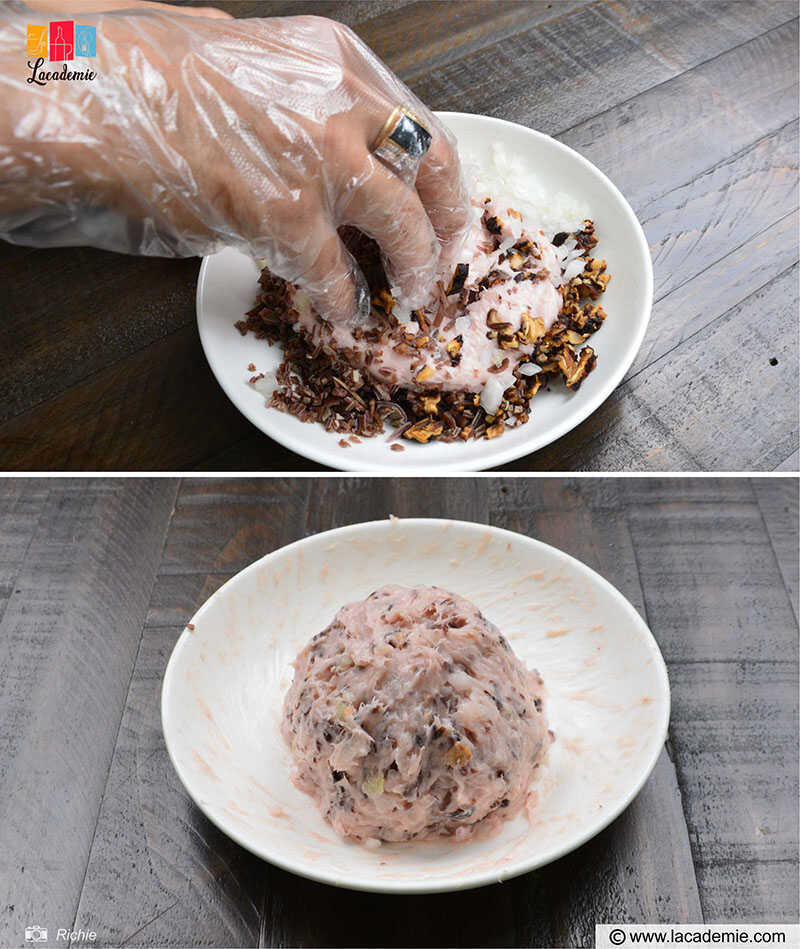
After the ribs have been simmering for an hour, they should be soft and tender. Now’s the time to remove the onion, the roots of the scallions and cilantro from the broth.
Next, using a teaspoon or a small spoon, scoop up portions of your pork mixture and drop them into the simmering broth. Continue this process until you’ve used all your mixture. Let the broth cook for an additional 15 minutes over low heat.
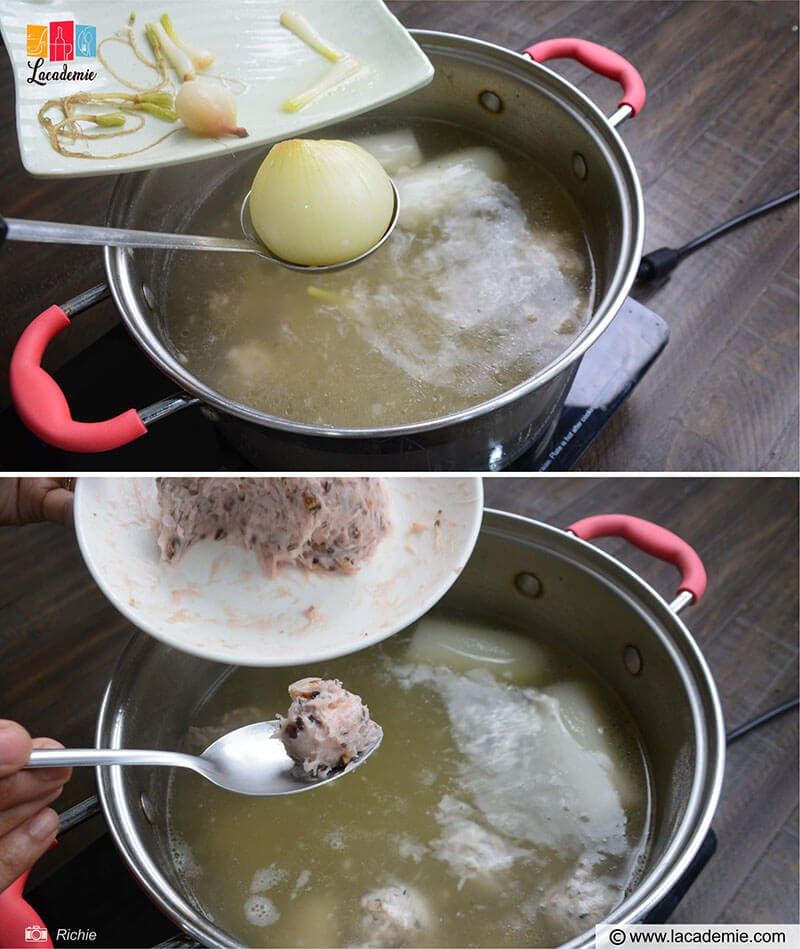
Step 5: Cook The Tomatoes
In a separate pan, heat some olive oil and stir-fry the tomatoes briefly. Mash the soaked sour tamarind until it dissolves into the water, and then pour it into the pan with the tomatoes. After 1 or 2 minutes, add the tomato and tamarind mix to the soup.
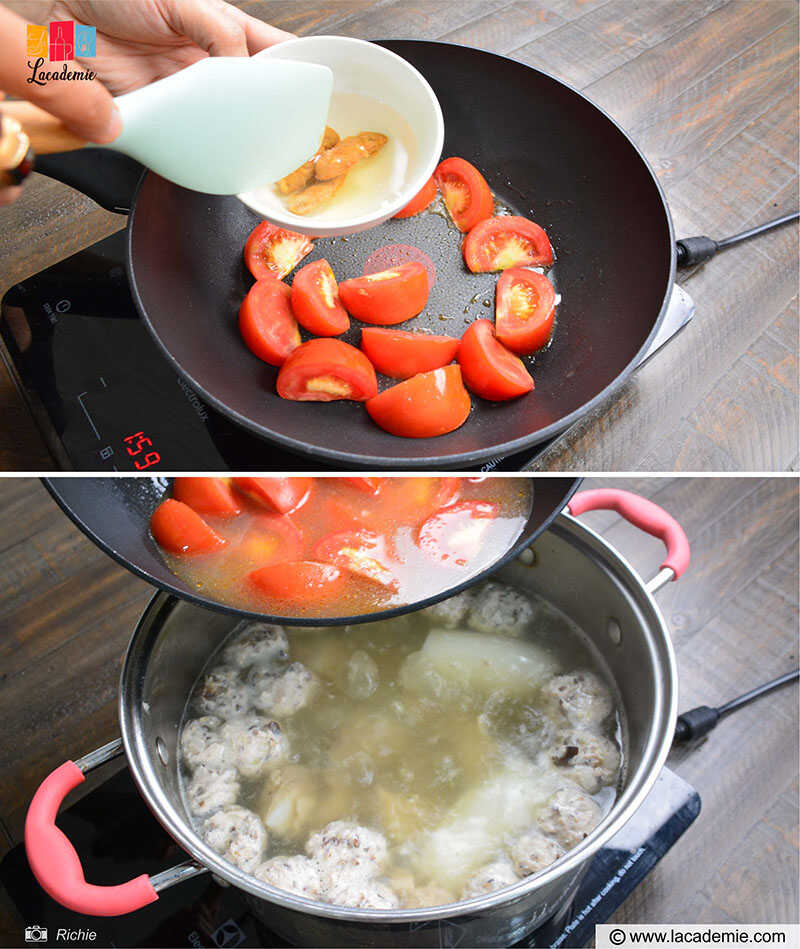
Sprinkle in 3 teaspoons of salt, 3 teaspoons of soup powder, and 2 tablespoons of rock sugar. At this point, you can adjust the seasoning to suit your taste! Let the soup cook for an additional 2-3 minutes, then turn off the heat.
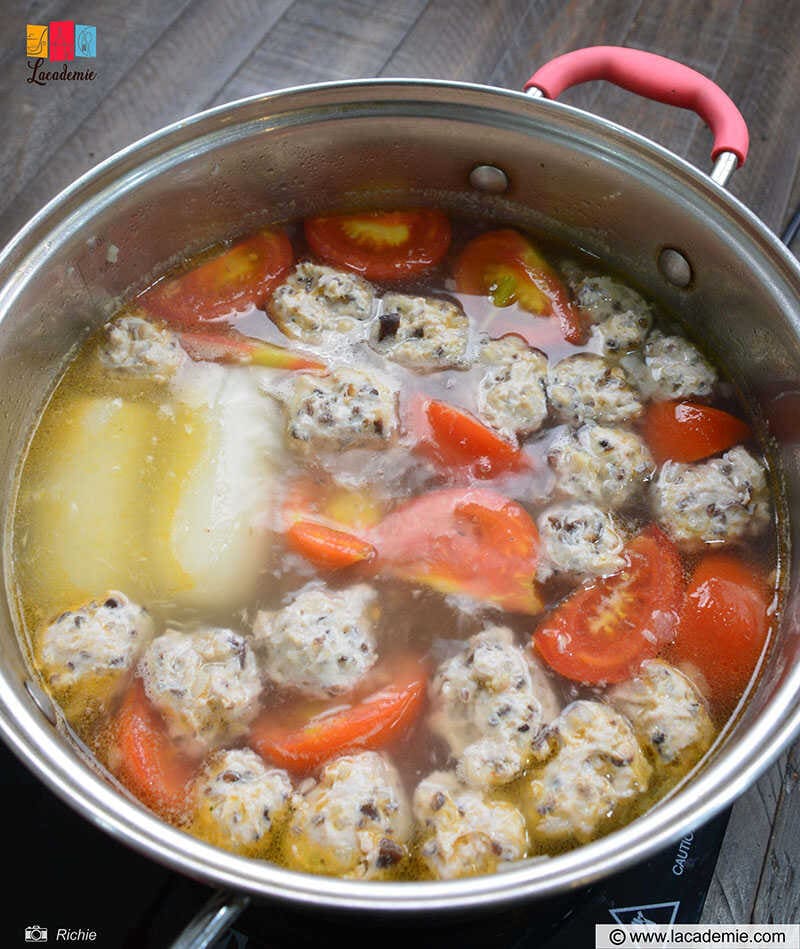
Step 6: Cook The Elephant Ear Stalk And Blanch The Noodles
Blanch the vermicelli noodles in boiling water for about 30-45 seconds.
Next, boil the elephant ear stalk for 3-4 minutes, then quickly transfer it into an iced bath. This helps the stalk retain its attractive green color and its crunch. Wear food prep gloves and squeeze out any excess water from the stalk.
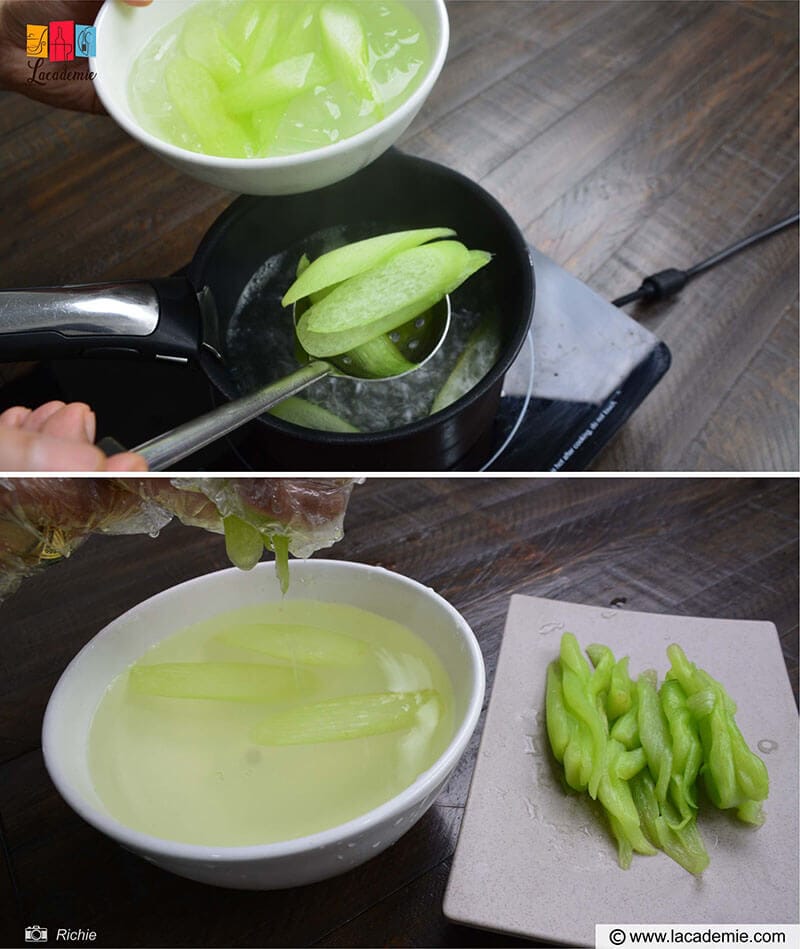
Step 7: Assemble The Dish
Lastly, assemble the dish by placing a layer of vermicelli noodles in each serving bowl. Then, add the pork ribs, meatballs, some tomato slices, and elephant ear stalk slices on top.
Pour the broth into the bowl until it covers the noodles. Then, sprinkle some scallions, cilantro, culantro, fried shallots, and a dash of ground pepper over the bowl of noodles.
You can add some chili sauce, sate sauce, lime wedges, or chili pepper to boost the flavor.
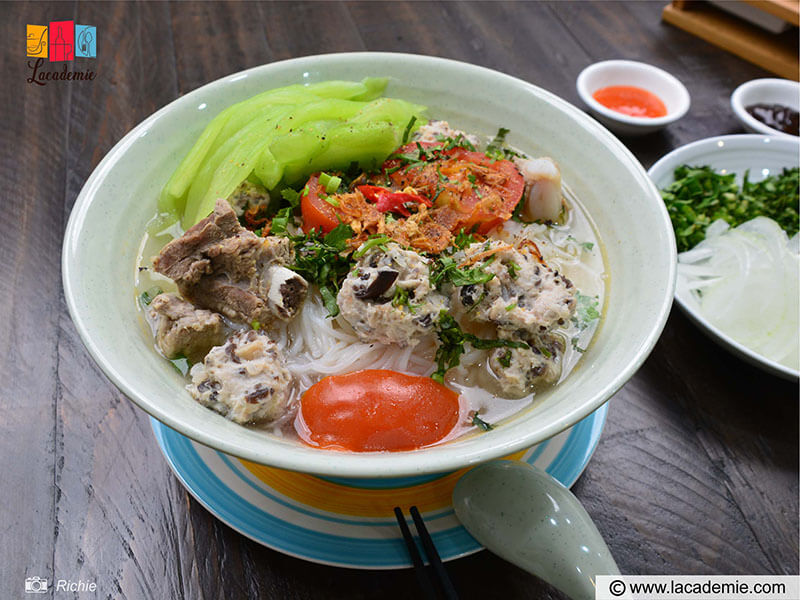
Tips And Tricks
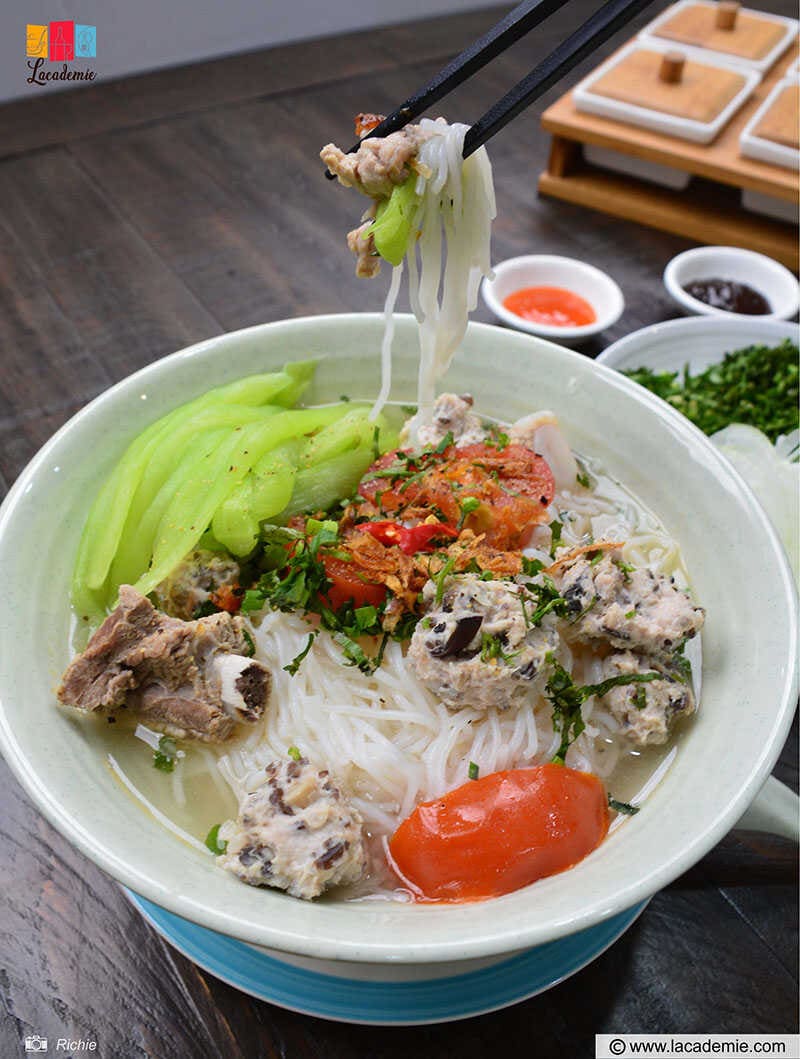
- While simmering the ribs, make sure to skim off any foam from the top and refrain from covering the pot to keep the broth clear.
- Note that you may want to boil the elephant ear stalk more thoroughly if you are prone to mouth irritation.
- Also, when squeezing out the water, apply just enough pressure to prevent the stalk from getting mushy.
- To enhance the flavors, try to marinate the pork ribs for a longer period of time. Overnight marination, if possible, allows the flavors to penetrate deeply into the meat.
- Remember to adjust the seasonings according to your taste before serving. Everyone has a unique taste preference, so feel free to tweak the soup to your liking.
How To Store Bun Suon Doc Mung
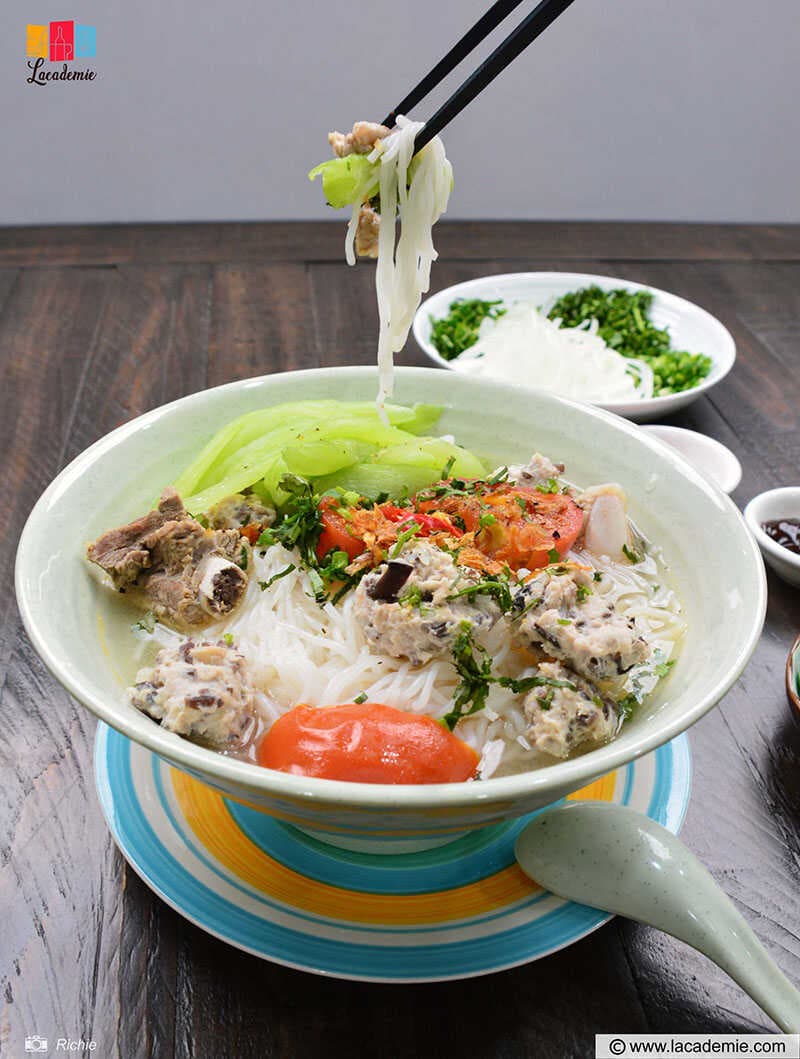
To store your Bun Suon Doc Mung, the first step is to separate the ingredients. Store the broth, noodles, meat, and vegetables in individual airtight containers. Remember, for safety and to prevent bacterial growth. It’s important to cool the soup quickly before storing it.
If you’re planning to consume the soup within a few days, refrigeration is suitable. You can keep the noodle soup for up to four days in a fridge.
If you’re preparing it for longer storage, freezing is a better option. The broth and meat can be frozen and kept for up to three months. However, it’s best to consume the noodles and vegetables fresh, as freezing can alter their texture.
When you’re ready to enjoy the soup again, heat the broth and meat on the stove until they’re hot. If necessary, you can blanch the noodles in boiling water.
Then, assemble the dish by combining the noodles, meat, and vegetables in a bowl and pouring the hot broth over the top.
A More Decadent Variation You Should Try
If you fancy adding a touch of decadence to your Bun Suon Doc Mung, incorporating a pig trotter into the soup can be an exciting variation. Pig trotters are rich in collagen and are known to lend a deep, meaty flavor and luxurious texture to the dish.
Start by prepping the pig trotter as you would the pork ribs – quick blanch it in salted water to clean it and remove impurities. Then, add it to your broth along with the ribs and let it simmer.
Remember, pig trotters require a longer cooking time than ribs to become tender, so adjust your cooking times accordingly. You might need to start simmering the trotter before adding the ribs.
As the trotter cooks, it will release collagen into the broth, giving it a rich, silky texture. The meat itself becomes incredibly tender, almost melt-in-your-mouth, and brings an additional layer of flavor and texture to the soup.
More Vietnamese Noodle Soup Suggestions
- Vietnamese Pork Ball Noodle Soup (Bun Moc): This is a comforting and simple noodle soup made with pork meatballs, vermicelli noodles, and a flavorful broth. It is usually garnished with fresh herbs, lime wedges, and chilies to enhance the taste.
- Wonton Noodle Soup (Mi Hoanh Thanh): A classic Vietnamese dish featuring delicate wontons filled with seasoned pork, served in a savory broth with egg noodles.
- Vietnamese Fermented Fish Noodle Soup (Bun Mam): Bun Mam is a unique and robust noodle soup hailing from the Mekong Delta. Its distinct flavor comes from fermented fish combined with rice vermicelli, squid, shrimp, and pork belly.
- Vietnamese Rice Noodle Soup With Crab Meat (Banh Da Cua): This dish originates from Hai Phong, a coastal city in northern Vietnam. It features wide rice noodles, crab meat, and other seafood, all steeped in a flavorful tomato-based broth.
FAQs
Bring A Taste Of Hanoi To Your Home
Isn’t it wonderful how you can put simple ingredients together and come create such a beautifully complex dish as Bun Suon Doc Mung? Please let me hear your feedback on this recipe. Have you tried it before, or is it your first time?
Please share your experiences and any tweaks you might have added in the comments below. If you found this recipe helpful, do me a favor and hit that like button. Better yet, share this Vietnamese dish with your friends and family.
Nutrition Facts
5 servings per container
- Amount Per ServingCalories604
- % Daily Value *
- Total Fat
36.7g
56%
- Saturated Fat 13g 65%
- Cholesterol 209mg 70%
- Sodium 157mg 7%
- Potassium 834mg 24%
- Total Carbohydrate
10.3g
4%
- Dietary Fiber 1.3g 4%
- Sugars 3.9g
- Protein 54.7g 108%
- Calcium 84%
- Iron 5%
* The % Daily Value tells you how much a nutrient in a serving of food contributes to a daily diet. 2,000 calories a day is used for general nutrition advice.

